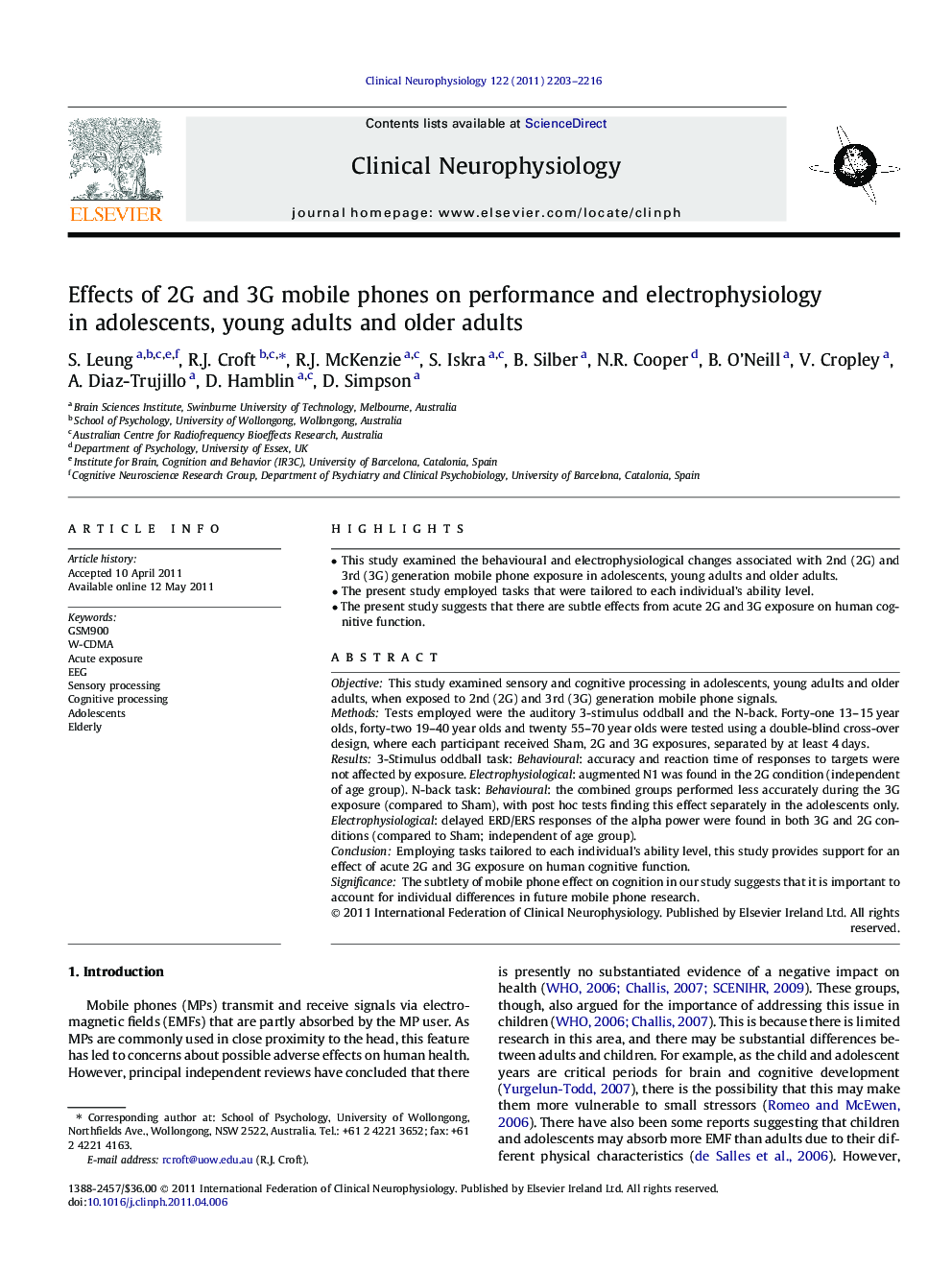| Article ID | Journal | Published Year | Pages | File Type |
|---|---|---|---|---|
| 3043799 | Clinical Neurophysiology | 2011 | 14 Pages |
ObjectiveThis study examined sensory and cognitive processing in adolescents, young adults and older adults, when exposed to 2nd (2G) and 3rd (3G) generation mobile phone signals.MethodsTests employed were the auditory 3-stimulus oddball and the N-back. Forty-one 13–15 year olds, forty-two 19–40 year olds and twenty 55–70 year olds were tested using a double-blind cross-over design, where each participant received Sham, 2G and 3G exposures, separated by at least 4 days.Results3-Stimulus oddball task: Behavioural: accuracy and reaction time of responses to targets were not affected by exposure. Electrophysiological: augmented N1 was found in the 2G condition (independent of age group). N-back task: Behavioural: the combined groups performed less accurately during the 3G exposure (compared to Sham), with post hoc tests finding this effect separately in the adolescents only. Electrophysiological: delayed ERD/ERS responses of the alpha power were found in both 3G and 2G conditions (compared to Sham; independent of age group).ConclusionEmploying tasks tailored to each individual’s ability level, this study provides support for an effect of acute 2G and 3G exposure on human cognitive function.SignificanceThe subtlety of mobile phone effect on cognition in our study suggests that it is important to account for individual differences in future mobile phone research.
► This study examined the behavioural and electrophysiological changes associated with 2nd (2G) and 3rd (3G) generation mobile phone exposure in adolescents, young adults and older adults. ► The present study employed tasks that were tailored to each individual’s ability level. ► The present study suggests that there are subtle effects from acute 2G and 3G exposure on human cognitive function.
